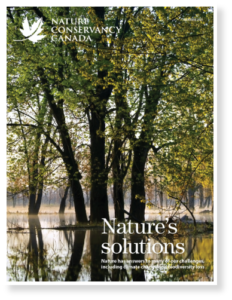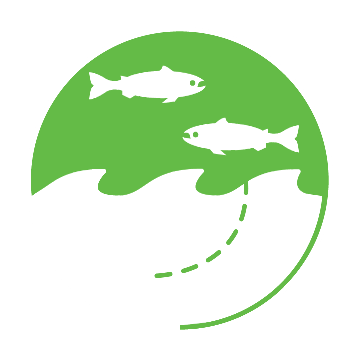Coast to coast
Smile for the camera
Watch this video to learn tips on how to take better shots for iNaturalist and contribute to citizen science. (page 4)

Coast to coast
Watch this video to learn tips on how to take better shots for iNaturalist and contribute to citizen science. (page 4)
Boots on the trail
Take a bird’s-eye view of native prairie grasslands and wetlands at NCC’s Asquith property in Saskatchewan. You won’t be disappointed. (page 6)
Feature story
Every spring, the Minesing Wetlands swell with floodwaters, acting as a giant sponge. They’re a great example of what nature can do in an era where the twin crises of biodiversity loss and climate change present some of the most important challenges to society today. Take flight over the wetlands in this video. (page 8)
Find out how the conservation of a natural area in New Brunswick is helping secure the drinking water for an entire town in this Nature Talks podcast episode.
Show notes:
Nature Talks: The Nature Conservancy of Canada Podcast offers you fascinating stories about nature, why we need it in our lives, and the passionate Canadians helping to protect it. In this seven-part series, we’ll take listeners to some of Canada’s important natural areas, from the Bay of Fundy to Victoria. We talk to Canadians helping care for these places, from scientists to hometown heroes. Connect to Canada’s nature. Learn about the Nature Conservancy of Canada’s conservation work. And be inspired to find out how you can help support this work.
Project updates
Click on the map icons below and learn about our work in British Columbia, Ontario, Quebec, New Brunswick and PEI. (page 14)
Species profile
Treat your eyes and ears to the sights and sounds of the Rivière Malbaie in Quebec, home to Atlantic salmon. (page 12)

APPEARANCE
Atlantic salmon typically have olive- to bronze-coloured backs, a white belly and silvery sides with red and black spots. When they are ready to reproduce, the fish take on a greenish or reddish hue with a few large spots. They typically weigh less than 4.5 kilograms and reach lengths of up to 70 centimetres.

RANGE
Atlantic salmon originally occurred in every country whose rivers flow into the North Atlantic Ocean and Baltic Sea. In North America, their range extends from Maine, in the northeastern U.S., to Ungava Bay, in northern Quebec. They are also commonly found in rivers throughout Newfoundland and southern Labrador.

HABITAT
Atlantic salmon are generally an anadromous species; they can live in both fresh and salt water. A few Atlantic salmon populations are landlocked in freshwater lakes.
Born in clear, cold rivers and streams, Atlantic salmon migrate to the ocean to feed and mature. They return to fresh water to spawn or reproduce.

THREATS
This species faces threats from climate change, dams and over-fishing, among others. Some Atlantic salmon populations in Canada are healthy, but many have been declining. Populations in the Bay of Fundy, Anticosti Island, Cape Breton and southern Nova Scotia have been assessed as endangered in Canada.
Close encounters
Watch how the white-winged crossbill uses its bill to crack open cone seeds, and learn its call so that next time you’re in nature, you might be able to identify one. (page 22)
Magazine survey
Tell us how you feel about the Nature Conservancy of Canada Magazine by completing this short survey. And by completing the online survey, you can enter to win an NCC prize pack.